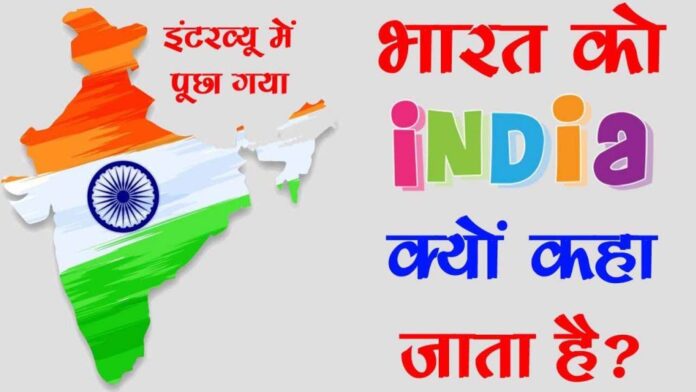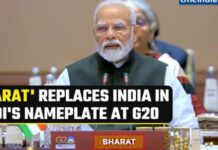भारत, India, Hind, Hindustan, Indus Vally History
India (official name: Republic of India, English: Republic of India) is the biggest country in the Indian subcontinent, situated in South Asia. India is the seventh biggest country on the planet geologically, while as far as populace it is the second biggest nation after China.
India is lined by Pakistan toward the west, China, Nepal and Bhutan toward the upper east, Bangladesh and Myanmar toward the east. In the Indian Ocean, it imparts a sea line to Maldives in the southwest, Sri Lanka in the south and Indonesia in the southeast. To its north lies the Himalaya Mountains and toward the south lies the Indian Ocean. In the south-east is the Bay of Bengal and in the west is the Arabian Sea.
Present day people or Homo sapiens came from Africa to the Indian subcontinent 55,000 years prior. They chose the western side of the Indus River 1,000 years prior from where they gradually relocated and formed into the Indus Valley Civilization. By 1,200 BC, the Sanskrit language was spread all through the Indian subcontinent and by then Hinduism had arisen here and the Rigveda had likewise been formed. By 400 BCE, casteism is found in Hinduism. It is as of now that Buddhism and Jainism are arising. Early political solidification prompted the Maurya and Gupta realms situated in the Ganges bowl. Their general public was brimming with wide innovativeness.
In the early middle age time frame, Christianity, Islam, Judaism and Zoroastrianism flourished on the southern and western banks of India. Muslim militaries from Central Asia kept on mistreating the northern fields of India, in the end Delhi. The Sultanate was set up and North India was added to the archaic Islamic realm. In the fifteenth century, the Vijayanagara Empire made a durable composite Hindu culture in South India. Sikhism was set up in Punjab. The British East India Company’s standard progressively extended, transforming India into a pioneer economy and uniting its sovereignty. British guideline started in 1858. Progressively a powerful patriot development started to shape, known for its peaceful dissent and turned into a central point toward the finish of British standard. In 1947, the British Indian Empire was isolated into two free domains, the Indian Dominion and the Dominion of Pakistan, which were separated based on religion.
India is a government republic beginning around 1950. India’s populace expanded from 361 million of every 1951 to 1211 million out of 2011. Per capita pay expanded from $64 to $1,498 and its proficiency rate expanded from 16.6% to 74%. India has turned into a quickly developing significant economy and focal point of data innovation administrations. India gained wonderful and unrivaled headway in the space area. Indian movies, music and profound lessons assume an uncommon part in worldwide culture. India has decreased the destitution rate generally. India is a country with atomic bombs. India has a continuous debate with Pakistan and China on Kashmir and India-Pakistan and India-China line. [36] 21.4% of the space is forested.
Origin of the name Bharat
India has two authority names – Bharat in Hindi and India in English. The name India is gotten from the English name “Indus” of the Indus stream.According to a legend portrayed in the Shrimad Bhagwat Mahapuran, the name Bharat is gotten from the name of an antiquated ruler Bharata, the relative of Manu and the oldest child of Rishabhdev. According to one derivation, the word Bharat (Bha + Rat) implies assimilated in the internal light or Videka-like light. There is additionally a third name Hindustan which implies the place that is known for Hind, this name became famous particularly in Arabia and Iran. quite some time in the past, a notable name of India was otherwise called Sone ki Chidiya. It is referenced in the Sanskrit epic Mahabharata that the space of present-day North India went under Bharat. India is additionally known by numerous different names like Bharatvarsha, Aryavarta, India, Hind, Hindustan, Jambudweep and so on
History
Principle article: History of India
Old
Present day people or Homo sapiens showed up in the Indian subcontinent from Africa around 65,000 years prior. The most seasoned human remaining parts known in South Asia are 30,000 years of age. The caverns of Bhimbetka, Madhya Pradesh are the most seasoned proof of human existence in India. The main super durable settlements took structure 9000 years prior. By 6,500 BC, people had begun cultivating, raising creatures and building houses, the remaining parts of which were found in Mehrgarh, which is in Pakistan. It steadily formed into the Indus Valley Civilization, the most seasoned metropolitan progress in South Asia. It was at its top between 2600 BC and 1900 BC. It is situated in present-day western India and Pakistan.
From 2000 to 500 BC, the Chalcolithic culture denoted the appearance of the Iron Age. This period is viewed as the production of the most established strict texts identified with Hinduism, the Vedas, and the upper fields of the Punjab and Ganges. The locale is viewed as the homestead of Vedic culture. Some antiquarians accept that the Indo-Aryans showed up from the north-west during this period. The standing framework additionally began during this period.
In the Vedic development, in the sixth century BC, in the Gangetic fields and in north-west India, little states and their bosses consolidated into 16 aristocrats and governments known as Mahajanapadas. amidst expanding urbanization, two other free non-Vedic religions arose. Jainism appeared during Mahavira’s lifetime. Buddhism, in view of the lessons of Gautama Buddha, drawn in everything except the working class devotees; The composition of history of India began in this period. In a period of rising metropolitan abundance, the two religions saw renunciation as the standard, and both set up durable religious practices. Strategically, by the third century BCE, the Magadha Empire converged with different realms to frame the Maurya Empire. Magadha set up its suzerainty over the entire of India with the exception of certain pieces of South India, yet some other significant enormous states isolated its significant domains. The Maurya rulers are known for the advancement of their realm and the elevated expectation of living as Emperor Ashoka established Buddhism and made a deadly implement free armed force. 180 AD From the start there were numerous intrusions from Central Asia, which brought about the foundation of Unani, Shaka, Parthi and in the end Kushan traditions in the North Indian subcontinent. The time frame from the third century onwards, when India was managed by the Gupta line, was known as the Golden Age of India.
As indicated by the Sangam writing of Tamil, from 200 BC to AD 200, the southern promontory was managed by the Chera administration, the Chola line and the Pandya tradition, who had broad exchange relations with India and Rome, and with the domains of West and Southeast Asia. Between the fourth and fifth hundreds of years, the Gupta Empire made a perplexing arrangement of organization and tax collection in the Greater Gangetic Plain; This framework turned into a model for the later Indian states. Hindu religion dependent on dedication was common in the Gupta Empire. Science, workmanship, writing, arithmetic, stargazing, old innovation, religion, and reasoning thrived during the rule of these lords, formed in old style Sanskrit.
Archaic India
The time frame somewhere in the range of 600 and 1200 is known as the time of social inspire in the local realms. He attempted however was crushed by the Chalukyas of the Deccan. His replacement needed to grow the realm toward the east however was crushed by the Pala leaders of Bengal. When the Chalukyas attempted to grow further south, They were crushed by the Pallavas, who were being gone against by the Pandyas and the Cholas in the far south. During this period no ruler had the option to frame a realm and kept on moving to different locales than the first land. The course of development continued. The new system during this period made it simpler for conventional ranchers to be isolated into caste. The rank framework brought about neighborhood differences.
In the sixth and seventh hundreds of years, the principal reflection songs were formed in the Tamil language. They were replicated all through India and prompted the restoration of Hinduism and the advancement of all cutting edge dialects of the subcontinent. The royals pulled in individuals to the capital. With urbanization, sanctuaries were based for an enormous scope in urban areas. The impact of the political and social arrangement of South India can be found in the nations of South Asia, Myanmar, Thailand, Laos, Cambodia, Vietnam, Philippines, Malaysia and Java.
After the tenth century, itinerant Muslim traditions over and over attacked the north-western fields by enormous powers comprising of quick ponies coordinated by standing and religion, in the end prompting the foundation of the Islamic Delhi Sultanate in 1206. They controlled quite a bit of northern India. furthermore needed to attack South India. The crumbling sultanate of the Indian tip top to a great extent passed on non-Muslims to their own traditions. Protected India from an overwhelming intrusion by the Mongols in the thirteenth century. The decrease of the sultanate prepared for oneself overseeing Vijayanagara Empire. Building on a solid Shaiva custom and the sultanate’s tactical procedures, the realm controlled over tremendous pieces of India and affected South Indian culture for quite a while from there on.
early current India
In the seventeenth century, numerous European nations, including Portugal, Dutch, France, Britain, who were ready to exchange with India, exploited the inward administrative turmoil of the country. He prevailed with regards to administering practically the whole country. After the bombed rebel against the British East India Company in 1857, otherwise called the First War of Indian Independence, a lot of India went under direct managerial control of British rule.
present day india
In the start of the 20th century, because of the spread of present day instruction and the changing political conditions on the world, a scholarly development was brought into the world in India, which established the framework of many changes and developments at the social and political levels. The foundation of the Indian National Congress in 1885 gave a powerful shape to the opportunity development. Toward the start of the 20th century, there was a huge peaceful battle for autonomy for quite a while, drove by Mahatma Gandhi, who is authoritatively tended to as the ‘Father of the Nation’ of present day India, around the same time India’s social development, which There was likewise a tremendous peaceful and progressive battle for freedom, which was driven by Dr. Babasaheb Ambedkar, who is tended to as the ‘Developer of Modern India’, ‘Constitution Maker’ and ‘Savior of Dalits’. Alongside this, because of the progressive battle drove by Chandrashekhar Azad, Sardar Bhagat Singh, Sukhdev, Rajguru, Netaji Subhash Chandra Bose, and so forth, on 15 August 1947, India got total freedom from the British guideline. From there on, on 26 January 1950, India turned into a republic.
Being a multi-ethnic and multi-strict country, India has been a survivor of shared and position disdain occasionally. Provincial discontent and uprisings have additionally occurred in various pieces of the nation, however its secularism and vote based system have stayed flawless, besides in 1975–77, when the then Prime Minister Indira Gandhi pronounced a highly sensitive situation.
India has unsettled line debates with adjoining countries. Because of this it has likewise confronted limited scope war. There have been battles with China in 1962, and with Pakistan in 1947, 1965, 1971 and 1999.
India is one of the establishing part nations of the Non-Aligned Movement and the United Nations.
India directed its first atomic test in 1974, trailed by 5 additional tests in 1998. Because of the monetary changes completed during the 1990s, today the nation has come in the rundown of the quickest emerging nations.
www.GKDuniya.in will update many more new jobs and study materials and exam updates, keep Visiting and share our post of Gkduniya.in, So more people will get this. This content and notes are not related to www.GKDuniya.in and if you have any objection over this post, content, links, and notes, you can mail us at gkduniyacomplaintbox@gmail.com
And you can follow and subscribe to other social platforms. All social site links in the subscribe tab and bottom of the page.
Important Links
Particulars Official Links |
Related Links |
Official Site |
View more at website |
You-tube |
GKDuniya9 |
|
|
GKDuniya.in, IndiaDigitalHub |
|
|
GKDuniya.in |
Apply Now |
Apply Now |
Get new updates |
Click here |





![List of districts in Mizoram 2023 List of districts in Mizoram 2023, List of Districts in Mizoram 2023,List of districts of Mizoram,Districts list of Mizoram,List of all the districts of Mizoram,Mizoram District Draft Electoral Roll, 2023 tarchuah a ni,Complete List of Districts of Mizoram 2022 - Delhi,mizoram,List of Districts of Mizoram,List of Districts of Mizoram (MZ) | villageinfo.in,State / UT Government : Mizoram : Districts,All Mizoram State District Name List,Aizawl Population (2022/2023), District Blocks List, Mizoram,Village/Panchayat | Aizawl District, Government of Mizoram,Member of Mizoram Legislative Assembly,Directory | Serchhip District, Government of Mizoram | India,District Lawngtlai, Government of Mizoram | India,Mizoram District List - Central Government Employees News,Kolasib District, Government of Mizoram | Kolasib District ...,List of Aspirational Districts (Phase-1),Mizoram District List,Mahatma Gandhi National Rural Employment Gurantee Act,Village Council | Mamit District, Government of Mizoram,Lunglei District | Welcome to LUNGLEI DISTRICT Web Portal ...,List of Authorized Doctors / Institution to issue Compulsary ...,List of Districts in Mizoram) 2023,Champhai District, Government of Mizoram | Welcome to Rice ...,Icici Bank Branches in Mizoram State,Mizoram Board of School Education,How Many Districts In India 2023? (May Updates),LGD - Local Government Directory, Government of India,MIZORAM Pin Code, MIZORAM All District PIN ... - ABP LIVE,Mizoram मिजोरम में कुल कितने जिले हैं और कौन कौन से ...,Mizoram Population 2022 | Sex Ratio & Literacy rate 2023,Gauhati High Court, Aizawl Bench,Mizoram RTO Code List 2023 MZ RTO Codes - Teqip,Mizoram Voter List 2023 PDF Download with Photo / Name ...,Mizoram Population 2023 - India Census,BJP wins district council elections before Mizoram ...,Beautiful Places To Visit In Mizoram On A Trip In 2023,Gorkhas record higher population rise than others in Mizoram,Mizoram: ZPM releases names of candidates for CADC polls,NHIDCL: Home,List of districts of Mizoram ...,Mizoram | Population, Map, Culture, Capital, & Government,Government Web Directory | NIC Mizoram State Centre,Mizoram and its 11 districts - YouTube,List of Business,ODF Plus Ranking,lawngtlai,Chakma Autonomous District Council – The official website of ...,Zoram Medical College, Government of Mizoram, India,THE GAUHATI HIGH COURT – High Court of Assam ...,MBSE HSLC HSSLC Topper List 2023 District wise School ...,Mizoram Population 2022/2023,ARMY RECRUITING OFFICE, AIZAWL INVITES ONLINE ...,Mizoram: Landslide kills 3 people in Khawzawl district,Mizoram Statehood Day 2023: Date, History, Significance, ...,Map of Mizoram - State, Districts Information and Facts,States and Capitals in India, List of 28 State & 8 UT 2023,Department of Rural Development, Mizoram,Home | Accountant General, Mizoram, Aizawl,List of Dist Magistrate / Collector / Dy Commissioner,Mizoram District Map, List of Districts in Mizoram,Navodaya Result 2023 Mizoram Selected List,List College Master - M N S S B Y - Government of Bihar,Results / Shortlisted candidates,JJM Dashboard,All Mizoram State Districts Name List, Mizoram In India ...,Mizoram/District Court in India - eCourts,District Nodal Officer Details List,Welcome to PARIVESH,Governors,PFMS,Swachh Bharat Mission - Gramin, Department of Drinking ...,Major Initiatives | Government of India, Ministry of Education,Punjab Police, India :,Admission Notifications,IPPE2:NREGA List,Electoral Roll 2023,Mizoram District Map 2023 PDF Download,National Legal Services Authority!,National Center for Vector Borne Diseases Control (NCVBDC ...,DSE Odisha Teacher Recruitment 2023 - Admit Card, Answer ...,Block Wise SHG And Memebr Details,PMAY Gramin List Bihar 2023 | नई प्रधानमंत्री ग्रामीण आवास ...,PM-Kisan Samman Nidhi,GST State Code List and Jurisdiction,List of Geographical Indications [GI Tags] in India,Districts | Meghalaya Government Portal,Government Holidays 2023 in India,UDISE+,Manipur violence: Over 7700 tribals took shelter in Mizoram,IFMIS: Login,Statistical Reports - Election Commission of India,DGT | Apprentice Mela,PMGSY,Poshan Abhiyaan - Jan Andolan,Ramsar Sites of India (75 Ramsar Sites in India in 2023)](https://gkduniya.in/wp-content/uploads/2023/05/List-of-districts-in-Mizoram-2023-218x150.png)
